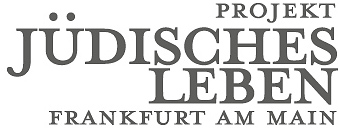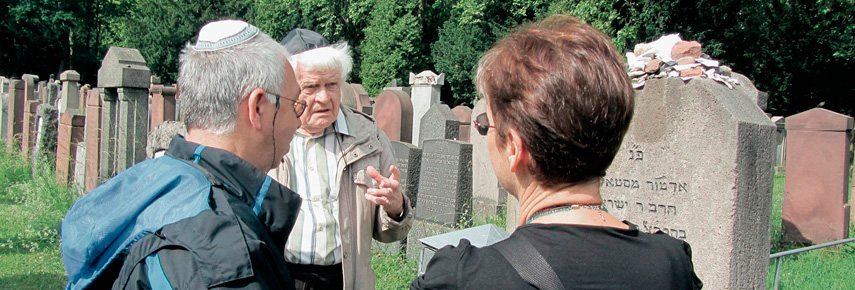The father Leopold was born in Bingen and the mother Leah in Odessa, Russia. They lived in their own house in the Nonnengasse in the eastend of the city of Frankfurt together with their sons Max, born in 1911, and Moritz, born in 1914, and their daughter Martha, born later in 1919. Leopold was a German soldier during the First World War who returned home as an invalid. Finally in the year 1935 he was honoured in the name of the “Führer and Chancellor”. He was awarded the Cross of Honour, instituted by the German President Hindenburg in 1934, for participants of the War.
As it seems they lived without being bothered in the beginning. The parents operated an antique shop located in the same house in which they lived. After graduating from school, Max worked in the business together with his parents. Moritz made an apprenticeship in the shoe factory Ada Ada in the town of Offenbach in the field of commerce. In the evenings he attended courses in the English language and in shorthand writing.
After the year 1933, there was a drastic worsening of the conditions for Jewish people so that many decided to leave their horne country. Moritz applied for a visa to the USA, because relatives of his mother from Odessa lived there. To his great disappointment he would not get this visa till at the earliest in four years. He had already purchased an undated ship passage to America, so as a precaution he kept this ticket.
In the summer of 1938, Moritz lost his job in the factory. The situation escalated in the “Reichkristallnacht” (Crystal Night). On November 9, Leopold and Max together with numerous other Jewish men were taken to the concentration camp Buchenwald. One day later Moritz was sent to the KZ Dachau. Since the ship passage ticket was still valid, Leah used this as an issue to achieve the release of her husband and sons. She succeeded after three weeks, but only under the condition that Moritz left Germany within ten days.
He exchanged his ticket for a passage to Shanghai since he had heard that no visa was required to enter China. Arriving in Shanghai at the end of December, Moritz realised the chance for his complete family to escape the terror in Germany. He sent a telegram stating that they should follow him immediately. So in the end, his parents, Max with his wife Else and son Rolf, and sister Martha were together in safety in the city of Shanghai, China.
Very soon Moritz again applied for an entry visa to the USA since his mother’s family could provide him with the required affidavits. He went to the USA by ship via Yokohama, Japan, and Pearl Harbor, Hawaii, in the summer of 1940. Very soon thereafter he was drafted into the US Army, hastily recieved American citizenship and was transported to Great Britain on a troop transporter, already on December 12, 1942. From there he took part in the D-day invasion of Normandy, France on June 6, 1944 and then fought in Germany with the Allies up to V-day (Victory Day) in 1945.
After his return to the USA he finally had the possibility to apply for entry visas for his entire family from China to the United States of America. And again – it’salmost unbelievable – because of his service in the army, all members of the family were brought to the USA at public expense.
In 1947, the Eis Family began a new life. Leopold spent his last years in a senior citizens residence; apparently Leah was full of energy and moved to Chicago where she lived to the age of 94. Max and his family resumed work in the antique trade. Max soon remarried and his daughter Andrea was born in 1950.

